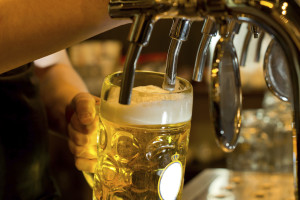 There are several terms used in the draft beer industry that are valuable to understand as you begin serving draft beer. These terms can be broken down into two main categories: conceptual terms and hardware terms. Conceptual terms are the terms that are used in the industry to refer to the scientific concepts that dictate how the system actually functions. Hardware terms are the names of specific parts which comprise the draft beer system. It’s easy to get lost in the language of the draft beer industry, so here’s a handy guide you can refer back to in case you get confused.
There are several terms used in the draft beer industry that are valuable to understand as you begin serving draft beer. These terms can be broken down into two main categories: conceptual terms and hardware terms. Conceptual terms are the terms that are used in the industry to refer to the scientific concepts that dictate how the system actually functions. Hardware terms are the names of specific parts which comprise the draft beer system. It’s easy to get lost in the language of the draft beer industry, so here’s a handy guide you can refer back to in case you get confused.
Beer Line Glossary: Concepts
Here are seven of the main concepts which are part of the beer line system. It will be important for you to understand industry lingo and the concepts they represent in order to function in the draft beer world.
CO2 Concepts
These first three concepts relate mostly to CO2 and its interaction with the keg.
Applied Pressure: the force required to push the beer from a keg through a beer line to the faucet. The greater the distance, the more pressure is required. However, over-pressurizing can lead to altering the quality of the beer. Blended gasses are sometimes required.
CO2: (carbon dioxide) a colorless, odorless, gas formed, among other things, by organic decomposition (fermentation). It is used to push the beer through the system.
CO2 Volume: a measurement of the amount of CO2 dissolved into a beer. Each Brewer provides a recipe which explains the specific amount of CO2 that should be applied to a keg of beer so that the characteristics of the beer remain intact.
Beer Flow Concepts
These three concepts relate to what happens as the beer embarks on its journey from keg to faucet.
Flow Rate: the speed at which the beer flows through the faucet. Typically, two ounces per second or almost one gallon per minute is standard flow rate.
Restriction: any resistance beer encounters as it is pushed from keg to faucet. Relevant factors are type of beer, length of line, beer system components, etc.
Balance: this is achieved when restriction and applied pressure are equal and flow rate is at desired level.
Types of Draw
The last three concepts are categories of draw systems.
Direct Draw: a dispensing system that only requires a short jumper connection from the keg to tap.
Long Draw: a dispensing system longer than 50 feet which uses bundled barrier tubing and normally requires a blended gasses to avoid over-pressurization.
Short Draw: a dispensing system 50 feet or less in length which uses straight CO2 or mixed gasses if preferred, and uses refrigerated and air-cooled lines.
If you need more help understanding how beer line systems work, please contact us at Clean Beer, in Milford, MA. We can meet all your beer line needs, from installation to cleaning and maintenance. In addition to our services, we sell new and used beer line equipment, for your home or bar. Clean Beer is the home of the clean beer line experts, contact us about your home or commercial tap needs.
